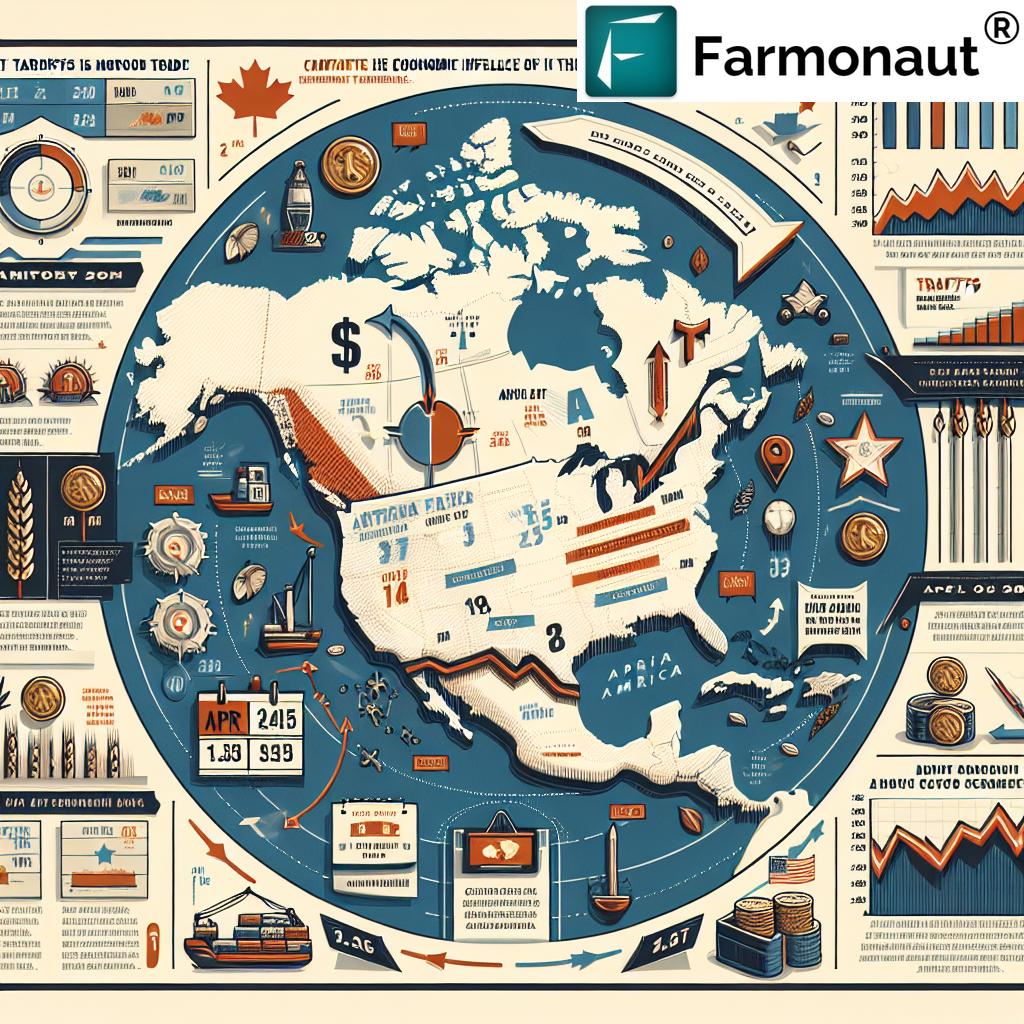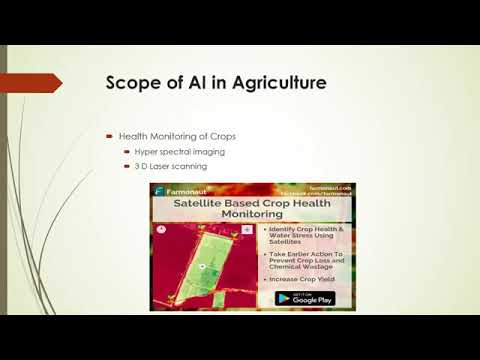Breaking: US to Impose 25% Tariffs on Agricultural Imports from Canada and Mexico Starting April 2
“The new 25% tariff on Canadian and Mexican agricultural imports could affect over $50 billion worth of trade annually.”
In a significant development that’s set to reshape the landscape of North American trade, the United States has announced the imposition of a 25% tariff on agricultural imports from Canada and Mexico, effective April 2. This move marks a crucial turning point in international agricultural trade and signals potential trade tensions across the continent. As we delve into the implications of this policy shift, we’ll explore how these US agricultural tariffs are poised to impact farmers, consumers, and the broader economic landscape.
Understanding the New Tariff Policy
On Monday, President Donald Trump made a sweeping announcement via his social media platform, Truth Social, declaring the implementation of tariffs on overseas agricultural products. The president’s statement, directed at US farmers, urged them to prepare for increased domestic production, as farm product import taxes are set to reshape the market dynamics.
“To the Great Farmers of the United States: Get ready to start making a lot of agricultural product to be sold INSIDE of the United States,” Trump stated, adding, “Tariffs will go on external product on April 2nd. Have fun!”
While the announcement was brief, it has far-reaching implications for the agricultural sector and international trade relations. The 25% tariff on agricultural imports from Canada and Mexico represents a significant shift in US trade policy changes, potentially triggering a trade war in North America.

Key Aspects of the New Tariff Policy
- A 25% tariff will be applied to agricultural imports from Canada and Mexico
- The policy is set to take effect on April 2
- The move aims to address concerns about fentanyl trafficking and illegal immigration
- The tariffs are expected to impact US customs and border protection procedures
- The policy could significantly influence agricultural product prices domestically and internationally
As we navigate through this complex issue, it’s important to understand the potential ramifications of these new agricultural product tariffs on various stakeholders in the agricultural ecosystem. From farmers to consumers, and from policymakers to international trading partners, the effects of this policy will be far-reaching and multifaceted.
The Impact on US Farmers and Agricultural Production
The implementation of these tariffs is expected to have a significant impact on US farmers and domestic agricultural production. With the increased cost of imported agricultural products, there may be a shift towards greater reliance on domestically produced goods. This could potentially benefit US farmers by creating a more favorable market for their products within the country.
However, the situation is not without its complexities. Many US farmers rely on imported agricultural inputs, such as fertilizers and machinery parts, which may now become more expensive due to the tariffs. This could potentially increase production costs for US farmers, offsetting some of the benefits of reduced competition from imports.
“Experts predict a potential 15-20% increase in domestic agricultural product prices due to the upcoming tariffs.”
In light of these changes, farmers may need to reassess their production strategies and explore ways to optimize their operations. This is where technology can play a crucial role in enhancing agricultural efficiency and productivity.
For instance, platforms like Farmonaut offer advanced satellite-based farm management solutions that can help farmers make data-driven decisions to improve crop yields and reduce resource wastage. By leveraging such technologies, US farmers can potentially mitigate some of the challenges posed by the new tariff policy and enhance their competitiveness in the domestic market.
Effects on US Consumers and Food Prices
The implementation of the 25% tariff on agricultural imports from Canada and Mexico is likely to have a significant impact on US consumers and food prices. As the cost of imported agricultural products increases, we can expect to see a ripple effect throughout the supply chain, ultimately leading to higher prices for consumers at the grocery store.
Some key points to consider regarding the impact on consumers include:
- Potential increase in prices for a wide range of agricultural products, including fruits, vegetables, dairy, and meat
- Possible reduction in variety of available products, particularly for seasonal items that are typically imported
- Shifts in consumer buying habits as they adjust to new price points and product availability
- Potential for increased demand for domestically produced alternatives
While the full extent of the price increases remains to be seen, experts suggest that consumers should be prepared for noticeable changes in their grocery bills. This situation underscores the importance of efficient agricultural practices and supply chain management to help mitigate the impact on consumer prices.
International Trade Dynamics and Diplomatic Relations
The imposition of these tariffs marks a significant shift in international agricultural trade dynamics, particularly within North America. As key trading partners, Canada and Mexico are likely to feel the immediate impact of these new tariffs, potentially leading to strained diplomatic relations and retaliatory measures.
Some potential consequences in the realm of international trade include:
- Disruption of established supply chains and trade flows within North America
- Potential for retaliatory tariffs from Canada and Mexico on US exports
- Renegotiation of trade agreements, including potential amendments to the United States-Mexico-Canada Agreement (USMCA)
- Shifts in global agricultural trade patterns as countries seek alternative markets
- Increased scrutiny of US trade policies by other international partners
These changes in trade dynamics could have far-reaching effects beyond just the agricultural sector, potentially impacting broader economic relations between the United States and its North American neighbors.

Implications for US Customs and Border Protection
The implementation of these new tariffs will undoubtedly have significant implications for US Customs and Border Protection (CBP) procedures. As the agency responsible for enforcing trade laws and collecting duties, CBP will play a crucial role in implementing and monitoring the new tariff policy.
Key changes and challenges for CBP may include:
- Increased workload in processing and inspecting agricultural imports
- Need for additional training and resources to accurately assess and apply the new tariffs
- Potential for longer processing times at ports of entry, affecting overall trade efficiency
- Enhanced scrutiny of agricultural imports to ensure compliance with the new tariff regulations
- Possible increase in attempts to circumvent the tariffs, requiring heightened vigilance
These changes in customs procedures could have ripple effects throughout the supply chain, potentially leading to delays and increased costs for importers and distributors of agricultural products.
Economic Implications and Investment Patterns
The introduction of these tariffs is expected to have significant economic implications, potentially reshaping investment patterns in the agricultural sector and related industries. As the market adjusts to the new reality of higher import costs, we may see shifts in both domestic and foreign investment strategies.
Some potential economic impacts and changes in investment patterns include:
- Increased investment in domestic agricultural production and infrastructure
- Potential for job creation in the US agricultural sector as domestic production expands
- Shifts in investment away from industries heavily reliant on agricultural imports from Canada and Mexico
- Increased interest in agricultural technology and efficiency-enhancing solutions
- Potential for new investment opportunities in alternative import sources or substitute products
These economic shifts may present both challenges and opportunities for businesses and investors in the agricultural sector. Companies that can adapt quickly to the new market conditions and leverage technology to enhance efficiency may find themselves well-positioned to thrive in this changing landscape.
Comparative Analysis of Agricultural Tariff Impact
| Agricultural Product Categories | Current Import Volume (Estimated) | Projected Import Volume Post-Tariff (Estimated) | Price Impact on US Consumers (Estimated %) | Potential Shift in Domestic Production (Estimated %) |
|---|---|---|---|---|
| Grains | 10 million tons | 7.5 million tons | 15-20% | 10-15% |
| Dairy | 5 billion liters | 3.75 billion liters | 20-25% | 15-20% |
| Meat | 2 million tons | 1.5 million tons | 18-22% | 12-18% |
| Produce | 15 million tons | 11.25 million tons | 10-15% | 8-12% |
This table provides a clear overview of the potential impact of the 25% tariff across various agricultural sectors. It illustrates the estimated changes in import volumes, consumer prices, and shifts in domestic production. These projections underscore the significant changes that the US agricultural market may experience as a result of the new tariff policy.
Technological Solutions for Adapting to New Market Conditions
As the agricultural sector faces these new challenges, technological solutions will play a crucial role in helping farmers, distributors, and other stakeholders adapt to the changing market conditions. Advanced agricultural technologies can help improve efficiency, reduce costs, and enhance productivity, potentially offsetting some of the impacts of the new tariffs.
Some key technological solutions that could prove valuable in this new landscape include:
- Satellite-based crop monitoring systems for optimizing yields and resource use
- AI-powered advisory systems for personalized farm management strategies
- Blockchain-based traceability solutions for enhancing supply chain transparency
- Precision agriculture tools for efficient resource allocation and cost reduction
- Data analytics platforms for market trend analysis and decision-making support
Platforms like Farmonaut offer many of these advanced solutions, helping farmers navigate the challenges posed by changing trade dynamics. By leveraging satellite imagery, AI, and other cutting-edge technologies, farmers can make data-driven decisions to optimize their operations and remain competitive in the face of new market pressures.
For those interested in integrating these technologies into their own systems or applications, Farmonaut also offers an API for accessing satellite and weather data. Developers can refer to the API Developer Docs for more information on how to leverage these powerful tools.
Policy Objectives and Long-Term Goals
While the immediate impact of the tariffs has garnered significant attention, it’s important to consider the broader policy objectives and long-term goals behind this decision. The US administration has cited several key reasons for implementing these tariffs:
- Addressing concerns about fentanyl trafficking from Mexico
- Tackling illegal immigration issues at the US-Mexico border
- Encouraging the relocation of manufacturing facilities back to the United States
- Aiming to correct trade imbalances with North American partners
- Promoting domestic agricultural production and reducing reliance on imports
These objectives reflect a broader strategy to reshape trade relationships and address various economic and security concerns. However, the effectiveness of tariffs in achieving these goals remains a subject of debate among economists and policy experts.
Potential Challenges and Criticisms
While the administration has outlined its objectives for the new tariff policy, it’s important to acknowledge the potential challenges and criticisms that have been raised:
- Concerns about retaliatory measures from Canada and Mexico, potentially escalating into a broader trade conflict
- Potential negative impacts on US businesses that rely on imported agricultural inputs
- Questions about the effectiveness of tariffs in addressing complex issues like drug trafficking and immigration
- Concerns about the impact on US consumers, particularly low-income households, due to potential price increases
- Potential disruptions to established supply chains and business relationships
These challenges highlight the complex nature of international trade policies and the need for careful consideration of their wide-ranging impacts.
Adapting to the New Reality: Strategies for Farmers and Businesses
As the agricultural sector prepares for the implementation of these new tariffs, farmers and businesses will need to develop strategies to adapt to the changing market conditions. Some potential approaches include:
- Diversifying crop selections to focus on products with reduced import competition
- Investing in efficiency-enhancing technologies to reduce production costs
- Exploring new market opportunities, both domestically and internationally
- Collaborating with industry partners to share resources and knowledge
- Leveraging data analytics for more informed decision-making
Technology will play a crucial role in helping farmers and businesses navigate these challenges. Solutions like Farmonaut’s satellite-based farm management platform can provide valuable insights to optimize operations and reduce costs.
The Role of Innovation in Addressing Trade Challenges
As the agricultural sector faces new challenges due to changing trade policies, innovation will play a crucial role in helping farmers and businesses adapt and thrive. Advanced technologies and data-driven solutions can help improve efficiency, reduce costs, and enhance productivity, potentially offsetting some of the impacts of the new tariffs.
Key areas of innovation that could prove valuable in this new landscape include:
- Precision agriculture techniques for optimizing resource use and crop yields
- AI-powered predictive analytics for market trend analysis and decision support
- Blockchain technology for enhancing supply chain transparency and traceability
- Advanced imaging and sensor technologies for real-time crop monitoring
- Automated systems for reducing labor costs and improving operational efficiency
By embracing these innovative solutions, farmers and agricultural businesses can position themselves to navigate the challenges posed by changing trade dynamics more effectively.
Looking Ahead: The Future of North American Agricultural Trade
As we look to the future, the implementation of these tariffs marks a significant shift in North American agricultural trade dynamics. While the immediate impacts are likely to be substantial, the long-term effects will depend on various factors, including:
- The response of Canada and Mexico to the new tariffs
- The adaptability of US farmers and businesses to the new market conditions
- The effectiveness of the policy in achieving its stated objectives
- Potential changes in global agricultural production and trade patterns
- Ongoing negotiations and potential revisions to trade agreements
As these factors play out, we can expect to see continued evolution in the agricultural trade landscape, with potential opportunities emerging alongside the challenges.
Conclusion
The implementation of 25% tariffs on agricultural imports from Canada and Mexico represents a significant shift in US trade policy, with far-reaching implications for farmers, consumers, and the broader economy. While the full impact of these tariffs remains to be seen, it’s clear that they will reshape the landscape of North American agricultural trade.
As stakeholders across the agricultural sector prepare for these changes, embracing innovation and leveraging advanced technologies will be crucial for adapting to the new market realities. Solutions like those offered by Farmonaut can play a vital role in helping farmers optimize their operations and navigate the challenges ahead.
Ultimately, the success of this policy will depend on how effectively it addresses its stated objectives while minimizing negative impacts on consumers and the broader economy. As we move forward, continued monitoring and analysis of the situation will be essential for understanding the evolving dynamics of agricultural trade in North America and beyond.
FAQ Section
Q: When will the new tariffs take effect?
A: The 25% tariffs on agricultural imports from Canada and Mexico are set to take effect on April 2.
Q: Which specific products will be affected by the tariffs?
A: While a comprehensive list has not been released, the tariffs are expected to affect a wide range of agricultural products, including grains, dairy, meat, and produce.
Q: How might these tariffs impact US consumers?
A: Consumers may see increased prices for various agricultural products, with experts predicting potential price increases of 15-20% on affected items.
Q: What are the stated objectives of this tariff policy?
A: The administration has cited several objectives, including addressing fentanyl trafficking, tackling illegal immigration, encouraging domestic manufacturing, and promoting US agricultural production.
Q: How might Canada and Mexico respond to these tariffs?
A: While specific responses are yet to be seen, there is potential for retaliatory measures, which could lead to further trade tensions in North America.
Earn With Farmonaut: Affiliate Program
Earn 20% recurring commission with Farmonaut’s affiliate program by sharing your promo code and helping farmers save 10%. Onboard 10 Elite farmers monthly to earn a minimum of $148,000 annually—start now and grow your income!




















